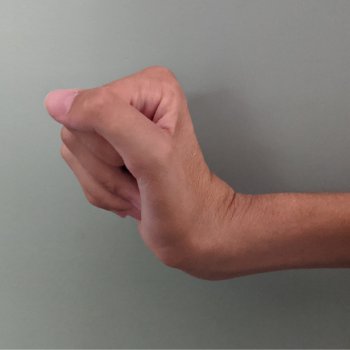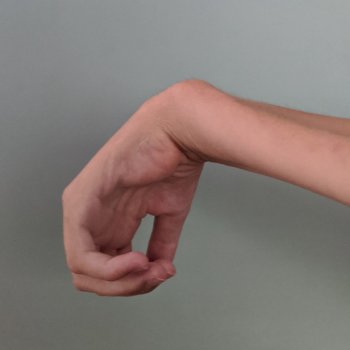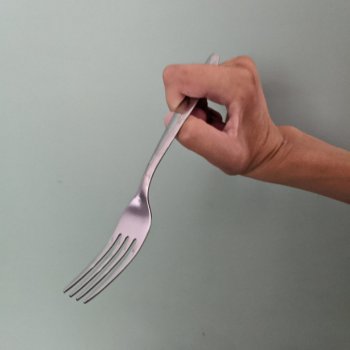
Tenodesis is a term that can be difficult to understand, but I’d like to shed some light on this topic. As a C5 through C7 quadriplegic, I have firsthand experience in using tenodesis to grasp and release objects. You can read the story of my spinal cord injury here as well as all of my blog posts for 180 Medical. Also, I make YouTube videos to help you live life just like you would’ve able-bodied.
In this article, I explain what tenodesis is and what it looks like. I also let you know when, why, and how to use tenodesis to accomplish different tasks.
What is tenodesis?
Tenodesis grasp and release is the movement of the wrist to open and close the fingers. Tendons in the forearm and fingers go over multiple joints and act as a big pulley system.
As a quadriplegic, I cannot voluntarily move my fingers. Therefore, I use tenodesis to passively move my fingers.
What does tenodesis look like?
Wrist extension or hand grasp is when your knuckles are higher than your wrist. When your wrist is extended, your fingers naturally curl or grip. When the wrist is extended, the tendons along the fingers shorten and pull the finger joints into flexion.
 Wrist flexion or hand release is when your knuckles are lower than your wrist. As your wrist is flexed, your fingers straighten or release. The tendons along the fingers lengthen and allow the finger joints to extend.
Wrist flexion or hand release is when your knuckles are lower than your wrist. As your wrist is flexed, your fingers straighten or release. The tendons along the fingers lengthen and allow the finger joints to extend.

Why would you need to use tenodesis?
Tenodesis grasp and release is a way for spinal cord-injured individuals to pick up, grab, and release items.
Able-bodied people use flexor and extensor muscles to open and close their fingers. However, after a spinal cord injury at the cervical level, the neck, signals may be sent to muscles that control the wrist but not the fingers.
If you’re quadriplegic, you may be able to use the passive mechanical advantage of tenodesis to assist in picking up objects. Also, it can help increase independence in activities such as eating and brushing teeth.
How do I use tenodesis to do tasks?
I use a wrist extension to close my fingers and hand, tightening them so I can grab items. I use wrist flexion to open my fingers and hand, loosening them and allowing me to let go of items.
If I try to pick up a water bottle by keeping my wrist flat, it will slip out of my fingers. Therefore, I use wrist flexion to open my fingers and wrist extension to close my fingers to grab the bottle and get a grip on it to pick it up.
If I try to pick up a package of gloves with my wrist flat, I won’t have any grip. So I use wrist flexion to open my fingers, then wrist extension to close my fingers on the gloves and grab them.
When it’s time to eat, I can hold a fork between my index finger and middle finger. I eat just fine like this, but if I want to poke something solid, such as steak, and keep my wrist straight, the fork will slide through my fingers. However, using wrist extension while holding the fork gives my fingers a tighter grip. Then, I can poke the steak without the fork moving through my fingers easily.

Catheterization with Minimal Finger Function
Not having finger function makes every task more challenging. One task that I thought would be impossible for me to perform without finger function was catheterizing myself independently. When I was in rehab, nurses catheterized me using a straight catheter. They told me I was going to be able to self-cath independently before I left rehab. However, I was not able to catheterize myself on my own because the catheters I was shown required more finger function.
Later, I learned about the features different catheters offer for individuals like me with limited hand dexterity. I discovered the EZ-Gripper™ Catheter Kit, which does not require finger function.
The EZ-Gripper™ catheter is a self-contained, pre-lubricated catheter within a bag. The user does not need to have fine motor skills in their hands or fingers to use this catheter independently. A gripper handle is affixed on the outside of the collection bag. Pressing down on the handle applies pressure to both sides of the tube, so the user doesn’t have to squeeze the tube with their fingers to advance it into the bladder.
180 Medical offers this catheter and a wide variety of other catheter supplies. However, I have not found a better catheter than the EZ-Gripper™ that works for those of us with poor finger function.
More questions related to spinal cord injuries?
Curious to know more about tenodesis and other relevant topics about living with a spinal cord injury? I welcome you to check out and subscribe to my YouTube channel.
Be sure to check 180 Medical’s blog for more resources, inspiring stories, and educational topics. They’re here to help you find the supplies to transform your life.